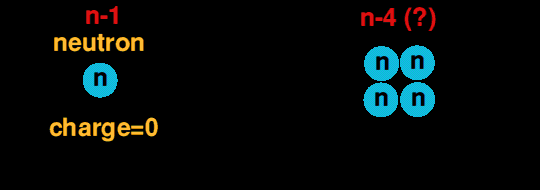

Many nuclides with an excess of neutrons have a few of the neutrons circulating around the core nucleus as a neutron halo. Beryllium-14 is one such nuclide. This unstable isotope has 4 protons and 10 neutrons, with either two (or some people think four) of the ten neutrons in a neutron halo. It was whilst smashing beryllium-14 nuclei at a carbon target that researchers were surprised to find four neutrons spilling off beryllium-14 in the same direction at the same time, leaving stable beryllium-10. They were expecting the neutrons to depart in differing directions. This fuelled speculation that bound tetra-neutrons were being emitted, which would be a very novel form of radiation if correct.
It is also expected that helium-8 would have four of its six netrons orbitting the nucleus as a tetra-neutron grouping.
Because of the Pauli Exclusion Principle, no two bound entities can have the same quantum state. In a helium-4 nucleus, with two neutrons and two protons, the pairs of neutrons have different spins, up and down. The same is true of the two protons. But with tetra-neutron, this would be impossible, two of the neutrons would have to spin in the same direction, which is forbidden. But they could have the same spin-two neutrons had slightly higher energy levels that the first two, but according to calculations such an arrangement should be unstable without some un-known force holding them more tightly together. But neutrons are very poorly understood because their short halflife (887.6 seconds) allows in-sufficient time for detailed study, and tetra-neutrons cannot be ruled out entirely.
![]()